E-mail newsletter
No.1
Dear colleague,
Due to the actual impact of the COVID-19 pandemic all around the world and the situation of uncertainty regarding traveling and meeting restrictions, the Steering Committee of the International Symposium on Metallomics and the Local Organizing Committee of the 8th International Symposium on Metallomics (ISM-8), with great regret, have decided to POSTPONE the meeting to the next year 2022, and to ALTER the conference venue from Chiba to Kanazawa.
On behalf of the Local Organizing Committee, I am now proud to announce that the ISM-8 will be held during July 11-14, 2022 at Kanazawa, Japan. Don't forget to book this dates in your agenda.
In addition, the LOC is planning that ISM-8 will be held as a hybrid event (on-site/on-line).
Before we begin arranging the conference schedule, we would like to collect your opinion which is preferable for you to attend to ISM-8 on-site or on-line at PRESENT. (You can freely change your preference until the registration of ISM-8.)
You can simply use following links to deliver us your opinions.
https://forms.office.com/r/cDGeahHfD9
Attached is an electronic version of the first circular of ISM-8. Please spread it to your colleagues and researchers who are interested in Metallomics. If you need the printed version, please contact to the LOC (ism-8@chiba-u.jp).
We will be making announcements both on our website and by email.
We hope that we can meet safely next 2022 in Kanazawa,
Warm regards,
June 2021

Yasumitsu Ogra
The Chair of ISM-8
No.2
New Research Directions for Non-traditional Metallomics
Dear colleague,
Mass spectrometer utilising atmospheric pressure plasma, i.e., inductively coupled plasma, as an ion source (ICP-MS) has a significant impact as an analytical tool for sensitive and rapid detection of trace-elements in biological samples. Meanwhile, laser ablation sampling technique combined with the ICP-MS technique (LA-ICP-MS) is now widely accepted as one of the most sensitive and rapid analytical tools for elemental and isotopic analysis of solid materials. The combination of the LA sampling with ICP-MS facilitates spatial measurements, leading this method to be the principal technique for imaging analysis of major- to trace-elements. It is also much more versatile, permitting elemental analysis from wet samples, which have been thought to be unextractable. With a better understanding of the mechanism of the laser ablation process and continuous developments in mass spectrometers, this technique has provided researchers with more precise elemental and isotopic data. Furthermore, recent notable progress in the ICP-MS technique is dramatic improvements in time resolution of the ion detector, enabling simultaneous determination of number concentration and size of nanoparticles (NPs). Metallomics on the level of single cells is an ultimate goal in the development of the field. Since every single cell is treated as an individual entity, or particle, the methodology of NP analysis using ICP-MS can be applied for the analysis of elemental analysis of cell samples. Combination of the high-time resolution data acquisition and mass scanning achieved by time-of-flight mass spectrometers has blossomed ICP into becoming the key technique for a wide range of studies in Metallomics. However, we should not be too hasty to open the ceremonial champagne, as there remain many problems to be solved in order to make LA-ICP-MS a truly routine and mature analytical tool. Basic experimentation still remains crucial, and the struggle continues as we still face issues in obtaining reliable data from samples of small sizes or small areas. Moreover, the argon plasma used in the ICP is so powerful that that no species information on the introduced molecule remains, which is a shame because LA-ICP-MS has played such an important role in the frontiers of Metallomics. Therefore, we are trying to develop completely new ion source to couple with LA for the organic mass spectrometer, aiming for simultaneous imaging analysis of metal and biomolecules from a single sample (i.e., hybrid imaging analysis). The most significant advantage of the hybrid imaging analysis is that information concerning possible functional linkage between metal ions and biomolecules can be derived. The technique is also applied to derive clues for designing molecules in DDS (drug delivery system) studies.
Typhoon Lee from CalTech referred a Chinese proverb by Confucius, "工欲善其事必先利其器" (if a craftsman wants to do his job well, he must first sharpen his tools) in their pioneering research dealing with the first findings of the isotopic heterogeneity of the elements in the solar system. More than 45 years has passed since publication of their milestone papers. However, that proverb has not lose its brilliance. We must keep trying to sharpen our research tools to open up new challenging applications in Metallomics.
1) T. Lee, D. A. Papanastassiou, and G. J. Wasserburg (1977) Mg and Ca isotopic study of individual microscopic crystals from the Allende meteorite by the direct loading technique, Geochim. Cosmochim. Acta, 41, 1473-1485.
July 2021

Takafumi Hirata (The University of Tokyo), The Co-chair of ISM-8
No.3
The Journal, Metallomics, update
Dear colleague,
Metallomics had been published from Royal Society of Chemistry till December 2020, and from January 2021the publisher has been changed to Oxford University Press, UK.
Although the data was from former publisher, its impact factor in 2020 was 4.526, which is slightly higher than the year before.
Metallomics has been supported former ISMs, traditionally, and will support ISM-8. Although it is under negotiation with organizing committee, Metallomics may support an award talk, this time.
New editorial information: Editor-in Chief, David P Giedroc, Indiana University, USA.
Associate Editors, Katherine Franz, Duke University, USA. Gilles Gasser, Chimie PrisTech, PSL University, France. Hugh Harris, University of Adelaide, Australia. and Maria Montes-Bayon, University of Oviedo, Spain.
Editorial Board Members, Claudia Blindauer, University of Warwick, UK. Bin Hu, Wuhan University, China. Uwe Karst, University of Munster, Germany. and Kazuya Kikuchi, Osaka University, Japan.
New publication policy is as follows: Metallomics publishes cutting-edge investigations aimed at elucidating the identification, distribution, dynamics, role and impact of metals and metalloids in biological systems. Studies that address the “what, where, when, how and why” of these inorganic elements in cells, tissues, organisms, and various environmental niches are welcome, especially those employing multidisciplinary approaches drawn from the analytical, bioinorganic, medicinal, environmental, biophysical, cell biology, plant biology and chemical biology communities. We are particularly interested in articles that enhance our chemical and/or physical understanding of the molecular mechanisms of metal-dependent life processes, and those that probe the common space between metallomics and other ‘omics approaches to uncover new insights into biological processes.
Among paper contents, Significance has omitted from paper format, in communication, full article and reviews.
New journal website: https://academic.oup.com/metallomics
Please submit your new papers to our renewed Journal!
August 2021

Kazuya Kikuchi (Osaka University), Executive LOC Member
No.4
Start of a new magazine, “Metallomics Research”
Dear Colleague,
The Japan Society for Biomedical Research on Trace Elements will publish a new journal entitled “Metallomics Research” from October 2021. Metallomics Research is an international, open access, peer-reviewed journal. The goal of Metallomics Research is to improve the understanding of metals through the integration of various fields such as analytical chemistry, biochemistry, toxicology, epidemiology, nutrition, pharmacology, medical sciences, environmental sciences, health science, agricultural science, etc. It presents original articles, reviews, notes (short communications) on all aspects of metal-related biomedical sciences.
The Japan Society for Biomedical Research on Trace Elements (https://www.brte.org/) was established in 1990 to contribute to the progress of sciences about trace elements. The 11th president is Prof. Ogra. Research on trace elements is a multidisciplinary field involving medical science, agriculture, chemistry, medicine, environmental science and pharmaceutical science. To this date, approximately 300 researchers in various industrial, governmental and academic fields have joined the Japan Society for Biomedical Research on Trace Elements. The Japan Society for Biomedical Research on Trace Elements has published an academic journal “Biomedical research on Trace Elements (BRTE)” (https://www.jstage.jst.go.jp/browse/brte/-char/ja) which deals Japanese and English articles. To improve the scientific activity about metallomics, the Japan Society for Biomedical Research on Trace Elements decided to establish a new international journal.
Metallomics Research welcomes original, innovative submissions in English from both members and non-members of the Japan Society for Biomedical Research on Trace Elements (Members have discounted page charges). In Metallomics Research, manuscripts are rapidly reviewed, and authors are informed the editor’s decision within two weeks after submission.
Authors can submit from https://pro.form-mailer.jp/fms/5efdcd3d230745, or send the manuscript directly to e-mail ( brte-post@seisin.cc ) as an attachment.
We hope you find this journal of interest and consider your valuable research to submit to Metallomics Research. If you have any questions, please contact (makawa@musashino-u.ac.jp).
Best wishes,
August 2021

Masahiro Kawahara (Musashino University), Executive LOC Member, Editor-in-chief, Metallomics Research
No.5
A Brief Introduction of Metallomics History
Dear colleague,
On this special relay mail-magazine, I would like to briefly introduce the short history of metallomics research in Japan, as well as in the world. The term “Metallomics” was coined in 2004 by Prof. Hiroki Haraguchi in a scientific paper published in the RSC journal, JAAS (1). However, Prof. Haraguchi already proposed the concept of metallomics before 2004 in Japanese and international symposiums held in 2002 (2). Therefore, ISM-8 held in 2022 will be just entire 20 years counted from his proposing Metallomics concept.
After the concept and term was accepted, a more significant event to establish Metallomics as a scientific field was the International Symposium on Metallomics 2007 (ISM 2007), held in Nagoya (Japan) in 2007. The 1st ISM 2007 organized under the direction of Prof. Haraguchi was a successful meeting, and it was agreed at the ISM Advisory Board Meeting that the ISM symposium would be held every two years, going around the world. The 2nd ISM 2009 in Cincinnati (USA), the 3rd ISM 2011 in Münster (Germany), the 4th ISM 2013 in Oviedo (Spain), the 5th ISM 2015 in Beijing (China), the 6th ISM 2017 in Vienna (Austria), and the 7th ISM 2019 in Warsaw (Poland) have been continuously and successfully held with both the Local Organization Committee and the International Scientific Committee.
As for the Metallomics Research Forum in Japan, the 1st forum was organized by Prof. Shuichi Enomoto as a commemorative event for ISM 2007, held in 2008. In the scientific committee meeting of the 1st forum, we discussed how to establish the metallomics community for the successive organization of the Metallomics Research Forum, and the committee members agreed that the forum would be held every 2 years. Then, the 2nd to 7th domestic Metallomics Research Forums have been held from 2010 to 2019, and since 2020 the activities are expansively included in Japan Society for Biomedical Research on Trace Elements, of which Prof. Yasumitsu Ogra is the president.
It was a great pleasure when the RSC launched the journal, Metallomics, in January 2009, for which Professor Joe Caruso was Chair of the Editorial Board from the beginning. Additionally, an IUPAC Technical Report was published on Guidelines for terminology, in which Professor Ryszard Lobinski played a key role (3). The publication of the journal, Metallomics, and the IUPAC Technical Report have accelerated the progress of metallomics research. As widely expected, Metallomics has developed steadily and broadly as an integrated biometal science, in cooperation with many distinguished scientists in the world working on genomics, proteomics, and metabolomics as well as in other scientific fields, to further expand the international metallomics community.
We hope that we can meet again next 2022 in Kanazawa,
With best regards,
1) H. Haraguchi, J. Anal. At. Spectrom., 2004, 19, 4–15.
2) H. Haraguchi and N. Furuta, J. Anal. At. Spectrom., 2010, 25, 1371–1377.
3) R. Lobinski, J. Sabine Becker, H. Haraguchi and B. Sarkar, Pure Appl. Chem., 2010, 82, 493–504.
September 2021

Hiroyuki Yasui (Kyoto Pharmaceutical University), Executive LOC Member
No.6
See you in Kanazawa, Japan
Dear colleague,
Since the pandemic of COVID-19 broke out all over the world, many international conferences have been cancelled or held online. In this summer, the Olympic and Paralympic Games were held in Tokyo under high alert, but they managed to be a success. After the Olympic games, the number of people infected with COVID-19 in Japan has decreased dramatically due to the progress of vaccination, and is now about 1/100 of the peak level. Since this October, most of the restrictions on travel, eating and drinking in Japan have been lifted, and normal daily life has gradually returned.
The 8th International Symposium on Metallomics (ISM-8) will be held in Kanazawa, Japan, in July 2022. Kanazawa is a historical city located 2.5 hours from Tokyo by Shinkansen (super express). Or you can visit by airplane. Kanazawa is known for its historical districts that still retain the atmosphere of the Edo period (the era of samurai 200 years ago) and traditional crafts such as lacquerware and gold leaf. Next to the venue of this conference, there is Kenrokuen Garden, one of the most beautiful gardens in Japan, and Kanazawa Castle, where the feudal lords lived during the Edo period. On the other hand, there is also a state-of-the-art art museum. All of these are within walking distance of the International Conference Center, and official visits are planned so you can enjoy them.
ISM-8 is a hybrid event, so you can participate online, but we are very much looking forward to meeting you in person in Kanazawa, Japan.
Respectfully,
October 2021

Akitoshi Okino (Tokyo Institute of Technology), Secretary General of ISM-8
No.7
A brief introduction of excursions as social program of ISM-8
Dear colleague,
The season of late autumn has arrived in Japan. The Executive LOC members of the 8th International Symposium on Metallomics (ISM-8) have been discussing scientific program slots and specific symposia, and now concrete plans are being made. We hope to introduce you on our website and an e-mail message in the near future.
Now, I would like to introduce a fun part of the conference, the excursion planned. The excursion is scheduled for the afternoon of Wednesday, July 13.
Kanazawa, the host city of ISM-8, is a historic castle town called “Little Kyoto”. Kanazawa Castle was built in the 16th century, and the venue of ISM-8 is close to the castle and its surrounding park. Excursion will take you to Kanazawa Castle and Kenroku-en Garden. Kenroku-en, one of the most famous feudal gardens of the Edo period (the era of samurai 200 years ago), is popular among tourists from all over the world as a garden where you can enjoy the beauty of the four seasons. In addition, we are planning to offer hands-on tours to experience Japanese culture and traditional crafts. For example, Japanese calligraphy, Incense ceremony, Kaga gold leaf pasting, Kaga Yuzen dyeing, etc., can be experienced by small groups. We hope that you will experience Japanese traditional culture and create rich memories. Please note that we will take great care to prevent the spread of COVID-19 infection during the event.
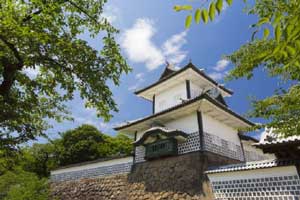 |
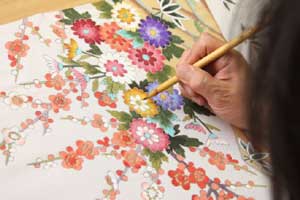 |
|
| Ishikawa-mon Gate, Kanazawa Castle | Kaga Yuzen dyeing |
Photo credit: Kanazawa City
I am looking forward to meeting everyone who is interested in metallomics in the time-honored city of Kanazawa.
Best regards,
November 2021

Akiko Hokura (Tokyo Denki University), Executive LOC Member
No.8
La Soirée du “Noh”
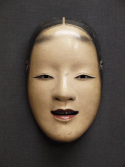
Kanazawa Noh Association
We will invite you “Noh Night “at Noh Theater during ISM-8. Noh is a traditional Japanese performance art that was registered by UNESCO as the first Intangible Cultural Heritage in 2008. Noh was developed in Japan about 700 years ago during the “Muromachi Era”, one of the oldest performing arts in the world, and it has been inherited by Noh artists until today.
I would like to introduce you Yoshio Sano (see picture below: Sano plays “Kanjin-cho” at center). Sano is a highly respected Noh artist of the “Hosho” in Japan. He was born into a family of Noh artists and started his carrier, when he was 4 years old. He told the story of the “Fushikizou” Noh mask in the picture above. The original mask was made by “Zouami” about 600 years ago and has been registered as a National Treasure since 1963. Sano explained that the original mask is never allowed to be used for performances, so a replica made by a present-day master is used. The Fushikizou mask in the picture is of a young woman around 20-years-old, which is used for the role of a princess, e. g. “Shizuka-gozen” or goddess. In the case of a role over 25-years-old, a middle-aged mask would be used, and for a role over 30-years-old, it would be a mask with wrinkles and white hair. Most Noh performances today are based on Noh stories that were popular 700 years ago, when the lifespan was less than fifty years.
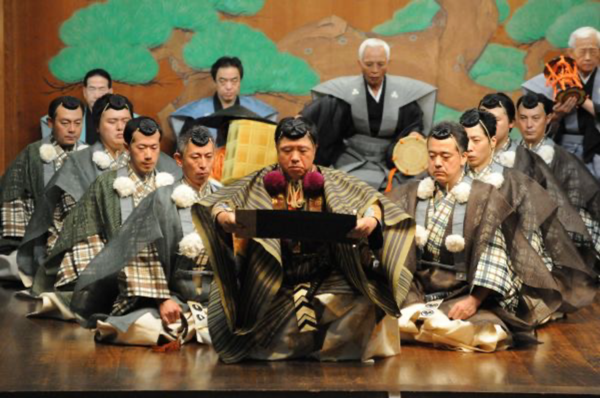
Kanazawa Noh Association
I personally like attending outdoor “Noh” performances, with torches named “Takigi- Noh”, which are often held in a city park. The light of the torches enhances the Noh mask effect, where the performers use changes of head orientation to create a variety of perceived expressions. The experience can take you back 700 years.
Noh artists lead by Yoshio Sano, will perform highlights from famous stories for our ISM-8 night, and their performance will also be streamed on-line. We hope that you enjoy their performance.
For more information about Noh in Kanazawa:
http://kanazawanohgakukai.jp/en/?welcome=hide
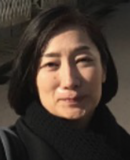
Mari Shimura (National Center for Global Health and Medicine), Executive LOC Member
ISM-8 Welcome party and Banquet Organizer
December 2021
No.9
The Invitation to Your Participation in ISM-8 and Attractive Kanazawa
Dear everyone,
Let me start by wishing you a happy New Year.
Last year, due to the COVID-19 pandemic, many of the conferences were cancelled or forced to be changed to on-line meetings. ISM-8 has been postponed for a year; we are now preparing somehow to hold ISM-8 on-site (hybrid with on-line).
Perhaps we are getting used to discussing remotely, but I think we can gain more friendships and relationships on-site. We would still like to visit the site, eat good food, and have a fruitful discussion.
As mentioned in previous e-mail newsletters, the host town, Kanazawa, is a historical castle town in harmony with modern architecture. We are now planning to go on an excursion to Kanazawa castle and Kenroku-en garden, and there are many other tourist spots.
Kanazawa is very famous for fresh seafood and local sake, but it is also a delightful city for those with a sweet tooth. Higashi Chaya-Gai Street will be one of the attractive spots to visit. The area’s feature is a retro atmosphere that evokes a sense of nostalgia, and has a variety of stores, including cafes and souvenir shops. You can enjoy eating a gold leaf ice cream, Instagram-worthy parfait, and traditional Japanese sweets (Wagashi) while walking around there.
Another place I would love to share with you is “Ninja” temple. The official name is Myouryu-Ji. The temple has nothing to do with Ninja (intelligence agent), but it has so many tricks here and there, such as a hidden staircase and a well that has provided a way into Kanazawa Castle. When it was built, the Maeda clan, the lord in these areas, was under tension with the Tokugawa Shogunate. So, the temple served as a castle and fort in case of attack. The temple looks like a two-story building from the outside, but it is seven stories high with 23 rooms. A guide will take you through the maze-like interior. Unfortunately, there is no guide in English, but the explanations given here should be enough, and just looking at it is enjoyable.
The global spread of the COVID-19 is continuing, but some experts say that the omicron variant will become a seasonal illness like flu.
I sincerely hope that this optimism will come true. And I look forward to seeing you all in Kanazawa in July.
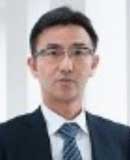
Tomonari Umemura (Tokyo University of Pharmacy and Life Sciences),
Executive Committee
January 2022
No.10
A brief introduction of Specialty session 2(SS-2): Development of Human Metallomics
Dear colleague,
The 8th International Symposium on Metallomics (ISM-8) will be held during July 11-14, 2022 at Kanazawa, Japan. We are organizing a specialty session at ISM-8 entitled” Development of Human Metallomics”.
We are exposed to a variety of chemicals on a daily basis, including metallic elements. Metallic elements such as mercury, lead, cadmium and arsenic pose harmful effects on human health. Mounting evidence has shown that long-term exposure to low concentrations of the harmful elements impacts our health in conjunction with imbalance in essential trace elements, an essential for maintaining normal vital activity. In assessing the health risks of harmful chemicals include heavy metals, it is essential not only to assess the hazards of each substance, but also to accumulate long-term data on complex exposures. Human biomonitoring (HBM) is a useful tool for assessing how much we are exposed to which chemicals. HBM is implemented in major developed countries and is used for risk assessment and risk management of chemical substances. In recent, new statistical methods have been introduced to assess multiple chemical exposure effects and become common practice in epidemiologic studies. Human metallomics has potential to impact ballistic and total assessment of the effect of element mixture on human health.
This symposium highlights the latest findings from epidemiologic studies, HBM and development of analytical methodologies for human metallomics. The symposium will also provide audience with the state-of-the-art science in metallomics and stimulate discussion about further research development.
We are looking forward to meeting and discussing you in Kanazawa.
Kind regards,
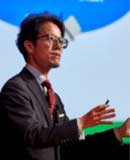
Shoji F. Nakayama (National Institute for Environmental Studies),
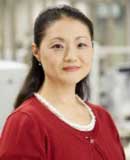
Yayoi Kobayashi (National Institute for Environmental Studies),
February 2022
No.11
SS-1: Metallomics Research to Reveal Biomineralization Mechanism
Dear colleagues,
The 8th International Symposium on Metallomics (ISM-8) will be held during July 11-14, 2022, at Kanazawa, Japan. Biomineralization will be discussed in our special session SS-1 at ISM-8.
Biomineralization is a reaction by which living organisms produce minerals. It is an interesting phenomenon that connects living things with inorganic matters. Familiar examples include the formation of bones and teeth (calcium phosphate) in the human body, shells, and pearls (calcium carbonate) in invertebrate, and so forth. Plants, animals, and microbes catalyze the processes of metal accumulation and precipitation, and the reactions sometimes depend on the interactions among multiple organisms. Biomineralization is one of the most active research areas, with excellent results achieved through interdisciplinary research. It is closely related to advances in mineralogy, analytical chemistry, biochemistry, molecular biology, pharmacology, medicine, and environmental sciences. The elucidation and understanding the mechanisms of biologically controlled mineralization also has potential industrial applications. Biomimetic approaches can be used to develop new materials. In addition, the production of biominerals in the field can also affect the dynamics of elements in terrestrial and aquatic environments. In this session, several biological processes for mineral deposition and state-of-the-art analytical techniques will be presented.
We look forward to fruitful discussions in Kanazawa.
Best Regards,
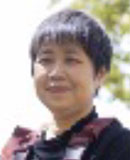
Emiko Harada (The University of Shiga Prefecture),
LOC Member, Organizer for Special Session 1

Akiko Hokura (Tokyo Denki University),
Executive LOC Member, Organizer for Special Session 1
March 2022
Supplemental 1
The venue for ISM-8, Kanazawa : the best place to visit in Japan
We have chosen Kanazawa to avoid the COVID19 pandemic; however, Kanazawa has much more reasons to be selected. It is the capital of Ishikawa prefecture, is famous for its historical buildings and delicious fresh seafood. Kanazawa is one of the best places to visit in Japan.
To talk about Kanawaza, we must go back to the Edo period. At that time, Ishikawa prefecture was called the Kaga domain (Kaga-Han, AD1601-1871) and ruled over by a feudal clan, the Maeda clan. Maeda Toshiie (1538–1599), the first load of the Maeda clan, was the wealthiest load in the country. Kanazawa was the castle town of the Maeda clan. Even now, we can find many inherited cultural traditions that Maeda Toshiie and his family developed.
Kanazawa Castle was the base of the Maeda clan, and Kenroku-en is one of the three most beautiful landscape gardens in Japan. Kanazawa is also the largest producer of gold leaf in Japan. The production started in the 16th century, and the Maeda clan invited many artisans to Kanazawa. Consequently, craftworks embellished with gold and gold leaf are famous as traditional crafts in Kanazawa.
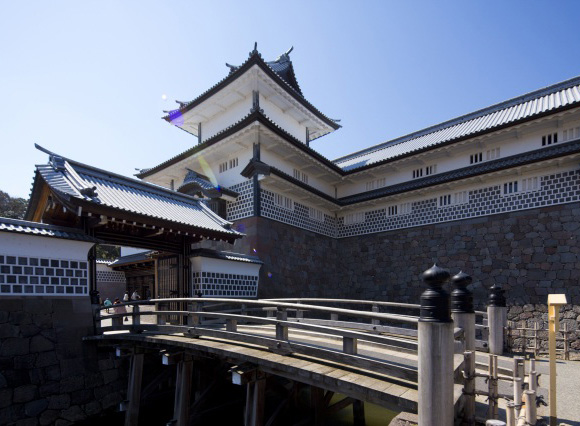 |
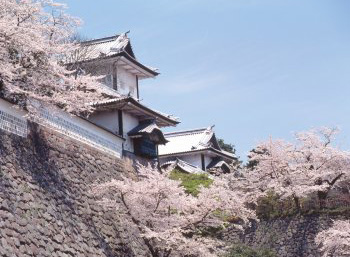 |
|
| Kanazawa Castle | ||
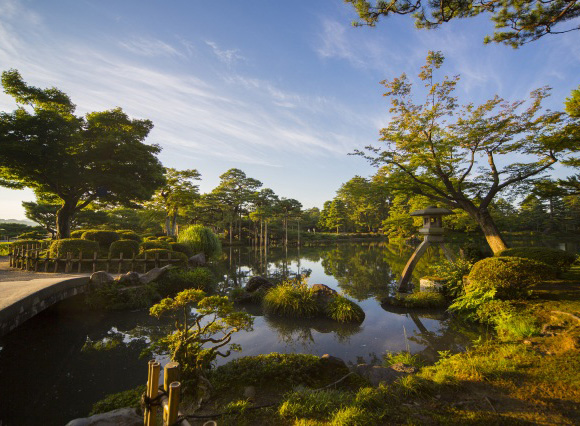 |
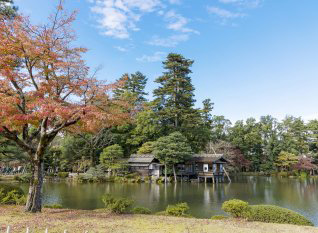 |
|
| Kenroku-en | ||
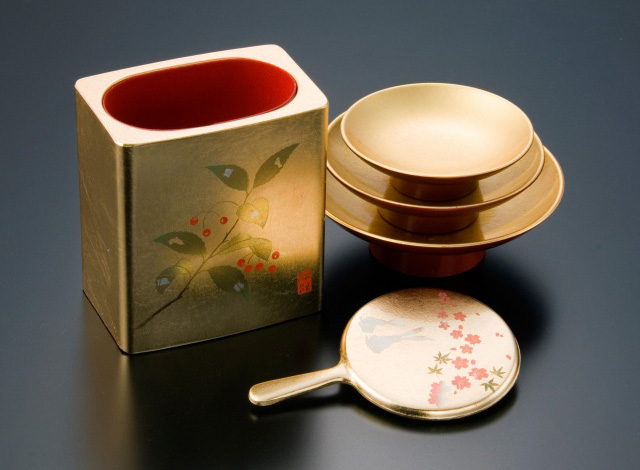 |
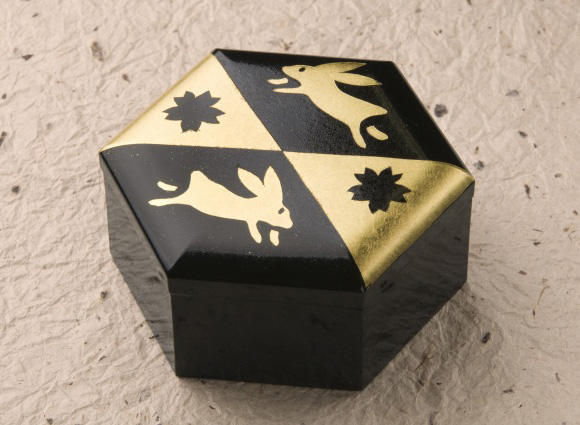 |
|
| gold leaf | ||
Maeda Toshiie especially liked "Noh," one of the Japanese traditional performing arts and is certified as an intangible cultural heritage by UNESCO. He promoted Noh not only among the privileged but also among ordinary people. Even after feudalism declined, the people in Kanazawa tried their best to preserve Noh and have inherited it up to today. In the ISM-8, we will have a chance to enjoy Noh.
The coastal waters of Kanazawa make their seafood fresh and delicious, and we can enjoy sushi and a local fish called Nodoguro. You can also join the Tea ceremony “Ocha” at several places in Kanazawa town, although reservation may be required. Since the opening of Hokuriku Shinkansen in 2015, Kanazawa has become more popular than ever. It takes only two and a half hours to get to Kanazawa from Tokyo by train!
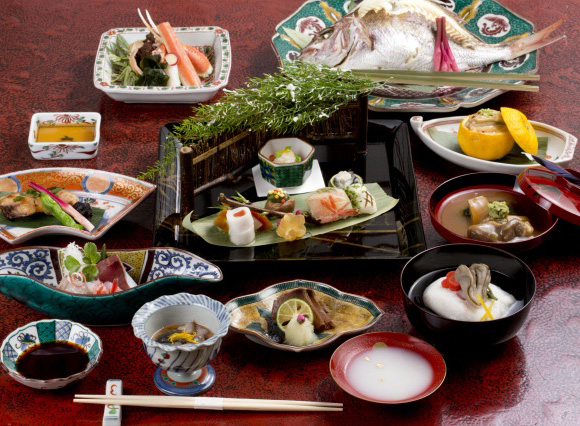 |
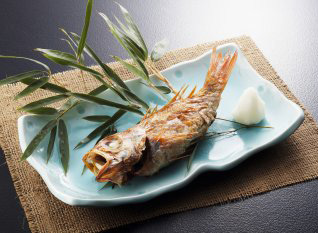 |
|
| fresh seafood dishes | Nodoguro | |
 |
||
| Tea ceremony “Ocha” |
We recommend the following videos for a virtual tour of Kanazawa.
Day Trip Exploring Kanazawa | japan-guide.com
<https://www.youtube.com/watch?v=20UkUHjdK3c&list=PLx11l41WKj-RoLQGyYjV1Ameac2B6K0n2&index=3>
Kimonos, Gardens, & Gold! Our trip to Kanazawa! | Japanagos
<https://www.youtube.com/watch?v=N_LWZftoVAo&list=PLx11l41WKj-RoLQGyYjV1Ameac2B6K0n2&index=9>
We also recommend the following video to enjoy Noh.
The Basic Knowledge to Enjoy “Noh” Japanese traditional arts | How to Japan TV
<https://www.youtube.com/watch?v=blOzH842IYg&list=PLx11l41WKj-RoLQGyYjV1Ameac2B6K0n2&index=2>

Yasunori Fukumoto (Chiba University), Executive Committee
March 2022 (Supplemental)
Supplemental 2
Present your poster and meet your friends in a metaverse.
We are planning to use a virtual space, oVice – a business metaverse, for a poster session and participant communication. The oVice presents “a virtual space where you can talk just like in-person”.
Please visit the following pages to test your environment in advance. We are expecting your feedback.
oVice top page: https://ovice.in/
Demo page: English or Japanese
Help Center: English or Japanese
For Mac users: Google Chrome is recommended, especially on Mac. Safari is discouraged. You also need to allow web browsers to access your camera and microphone in the system preferences.

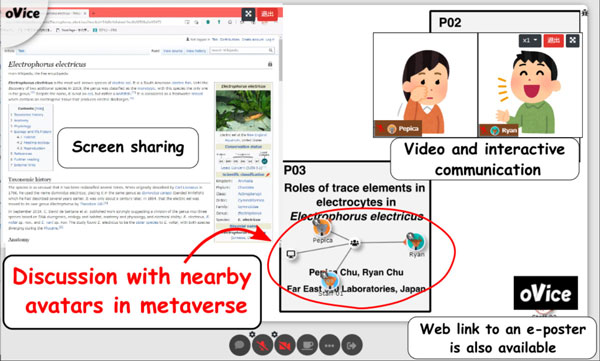
The layout in the metaverse is for your instruction. The real ISM-8 metaverse is attractive and communicative!

Yoasunori Fukumto (Chiba University), Executive Committee
April 2022 (Supplemental 2)




